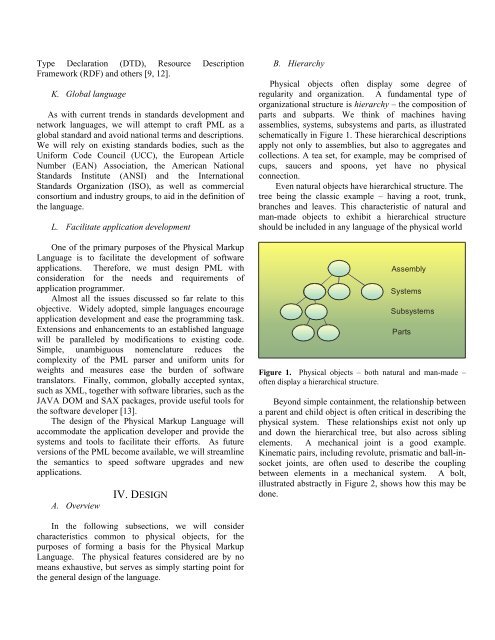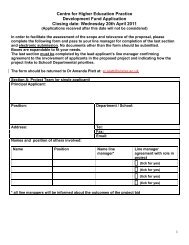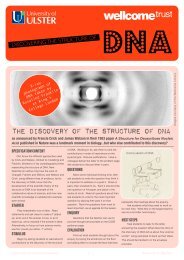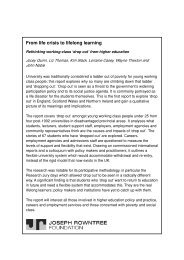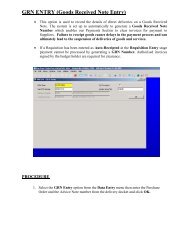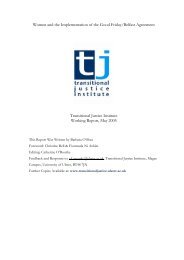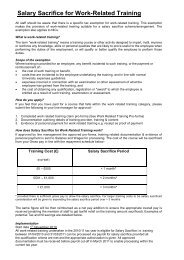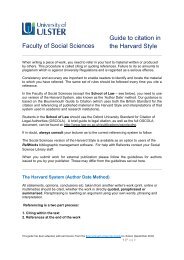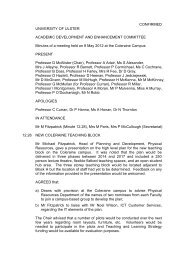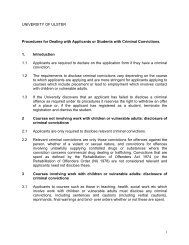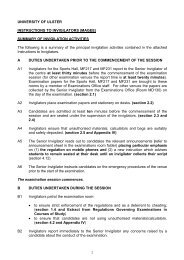The Physical Markup Language - Auto-ID Labs
The Physical Markup Language - Auto-ID Labs
The Physical Markup Language - Auto-ID Labs
Create successful ePaper yourself
Turn your PDF publications into a flip-book with our unique Google optimized e-Paper software.
Type Declaration (DTD), Resource Description<br />
Framework (RDF) and others [9, 12].<br />
K. Global language<br />
As with current trends in standards development and<br />
network languages, we will attempt to craft PML as a<br />
global standard and avoid national terms and descriptions.<br />
We will rely on existing standards bodies, such as the<br />
Uniform Code Council (UCC), the European Article<br />
Number (EAN) Association, the American National<br />
Standards Institute (ANSI) and the International<br />
Standards Organization (ISO), as well as commercial<br />
consortium and industry groups, to aid in the definition of<br />
the language.<br />
L. Facilitate application development<br />
One of the primary purposes of the <strong>Physical</strong> <strong>Markup</strong><br />
<strong>Language</strong> is to facilitate the development of software<br />
applications. <strong>The</strong>refore, we must design PML with<br />
consideration for the needs and requirements of<br />
application programmer.<br />
Almost all the issues discussed so far relate to this<br />
objective. Widely adopted, simple languages encourage<br />
application development and ease the programming task.<br />
Extensions and enhancements to an established language<br />
will be paralleled by modifications to existing code.<br />
Simple, unambiguous nomenclature reduces the<br />
complexity of the PML parser and uniform units for<br />
weights and measures ease the burden of software<br />
translators. Finally, common, globally accepted syntax,<br />
such as XML, together with software libraries, such as the<br />
JAVA DOM and SAX packages, provide useful tools for<br />
the software developer [13].<br />
<strong>The</strong> design of the <strong>Physical</strong> <strong>Markup</strong> <strong>Language</strong> will<br />
accommodate the application developer and provide the<br />
systems and tools to facilitate their efforts. As future<br />
versions of the PML become available, we will streamline<br />
the semantics to speed software upgrades and new<br />
applications.<br />
A. Overview<br />
IV. DESIGN<br />
In the following subsections, we will consider<br />
characteristics common to physical objects, for the<br />
purposes of forming a basis for the <strong>Physical</strong> <strong>Markup</strong><br />
<strong>Language</strong>. <strong>The</strong> physical features considered are by no<br />
means exhaustive, but serves as simply starting point for<br />
the general design of the language.<br />
B. Hierarchy<br />
<strong>Physical</strong> objects often display some degree of<br />
regularity and organization. A fundamental type of<br />
organizational structure is hierarchy – the composition of<br />
parts and subparts. We think of machines having<br />
assemblies, systems, subsystems and parts, as illustrated<br />
schematically in Figure 1. <strong>The</strong>se hierarchical descriptions<br />
apply not only to assemblies, but also to aggregates and<br />
collections. A tea set, for example, may be comprised of<br />
cups, saucers and spoons, yet have no physical<br />
connection.<br />
Even natural objects have hierarchical structure. <strong>The</strong><br />
tree being the classic example – having a root, trunk,<br />
branches and leaves. This characteristic of natural and<br />
man-made objects to exhibit a hierarchical structure<br />
should be included in any language of the physical world<br />
Assembly<br />
Systems<br />
Subsystems<br />
Parts<br />
Figure 1. <strong>Physical</strong> objects – both natural and man-made –<br />
often display a hierarchical structure.<br />
Beyond simple containment, the relationship between<br />
a parent and child object is often critical in describing the<br />
physical system. <strong>The</strong>se relationships exist not only up<br />
and down the hierarchical tree, but also across sibling<br />
elements. A mechanical joint is a good example.<br />
Kinematic pairs, including revolute, prismatic and ball-insocket<br />
joints, are often used to describe the coupling<br />
between elements in a mechanical system. A bolt,<br />
illustrated abstractly in Figure 2, shows how this may be<br />
done.


